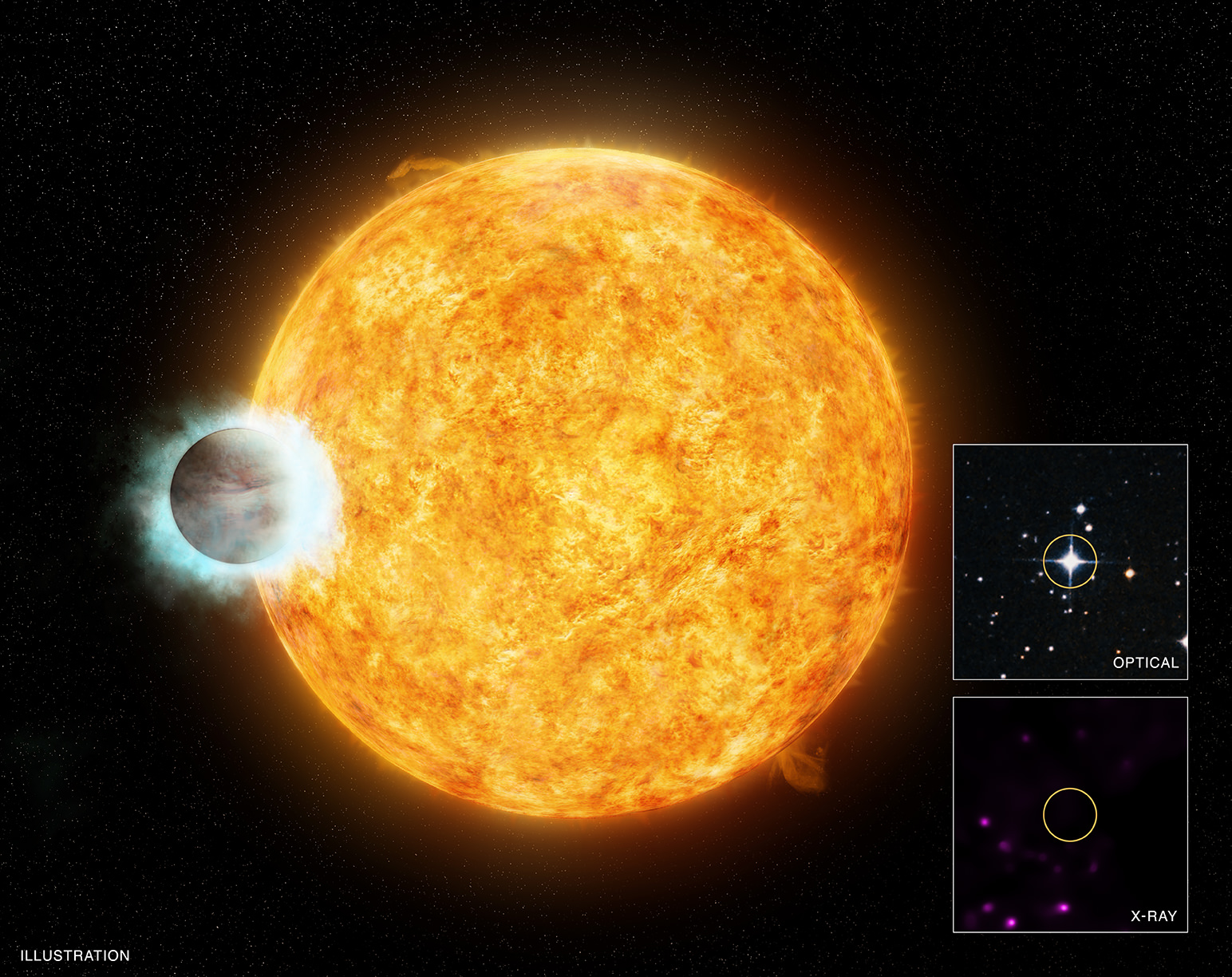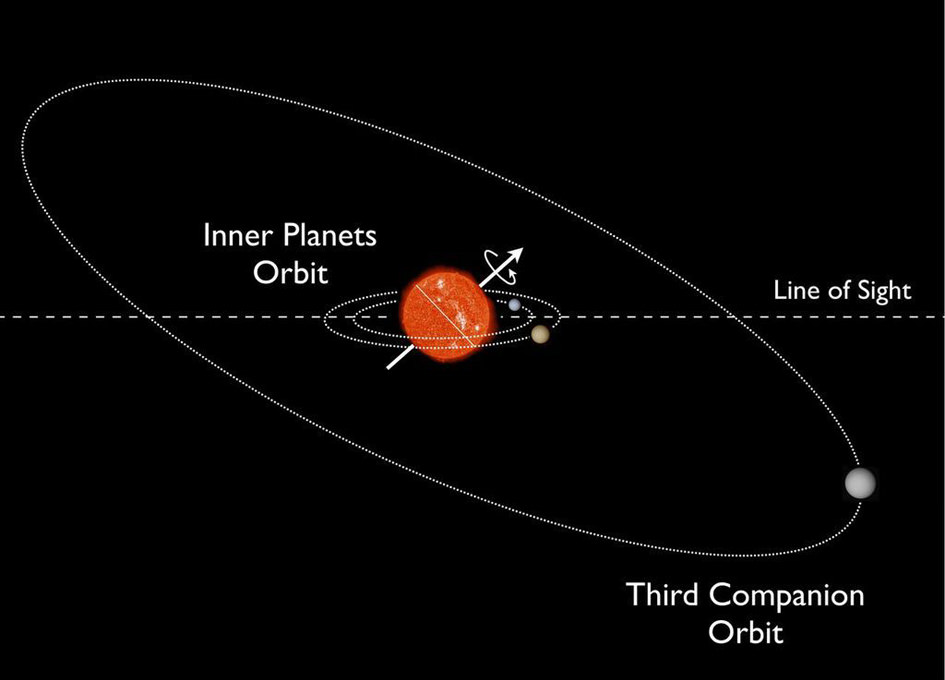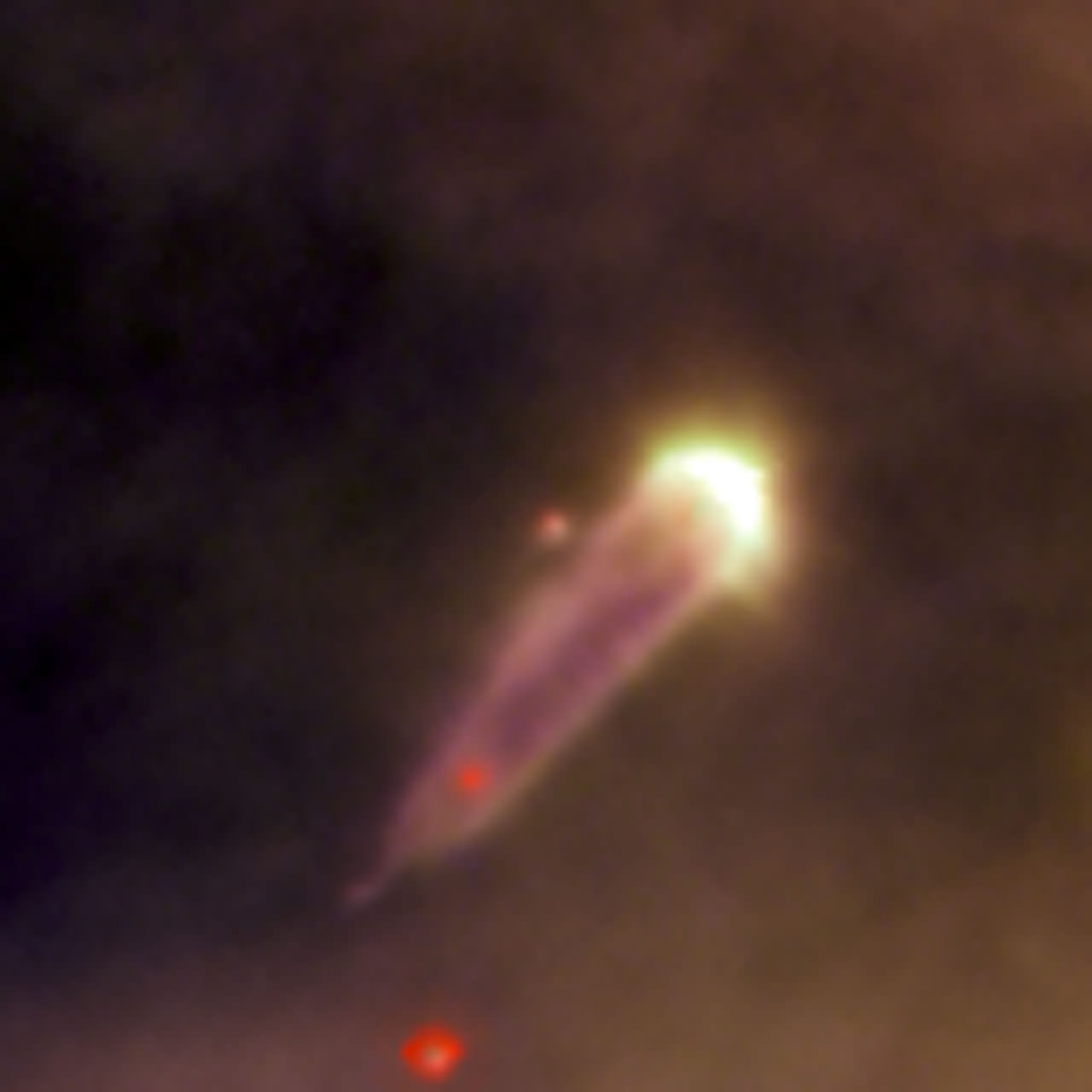Hot young stars are wildly active, emitting huge eruptions of charged particles form their surfaces. But as they age they naturally become less active, their X-ray emission weakens and their rotation slows.
Astronomers have theorized that a hot Jupiter — a sizzling gas giant circling close to its host star — might be able to sustain a young star’s activity, ultimately prolonging its youth. Earlier this year, two astronomers from the Harvard-Smithsonian Center for Astrophysics tested this hypothesis and found it true.
But now, observations of a different system show the opposite effect: a planet that’s causing its star to age much more quickly.
The planet, WASP-18b has a mass roughly 10 times Jupiter’s and circles its host star in less than 23 hours. So it’s not exactly a classic hot Jupiter — a sizzling gas giant whipping around its host star — because it’s characteristics are a little more drastic.
“WASP-18b is an extreme exoplanet,” said lead author Ignazio Pillitteri of the National Institute for Astrophysics in Italy, in a news release. “It is one of the most massive hot Jupiters known and one of the closest to its host star, and these characteristics lead to unexpected behavior.”
The team thinks WASP-18 is 600 million years old, relatively young compared to our 5-billion-year-old Sun. But when Pillitteri and colleagues took a long look with NASA’s Chandra X-ray Observatory at the star, they didn’t see any X-rays — a telltale sign the star is youthful. In fact, the observations show the star is 100 times less active than it should be.
“We think the planet is aging the star by wreaking havoc on its innards,” said co-author Scott Wolk (who also worked on the previous study showing the opposite effect) from the Harvard-Smithsonian Center for Astrophysics.
The researchers argue that tidal forces created by the gravitational pull of the massive planet might have disrupted the star’s magnetic field generated by the motion of conductive plasma deep inside the star. It’s possible the exoplanet significantly interfered with the upper layers of the convective zone, reduced any mixing of stellar material, and effectively canceled out the magnetic activity.
The effect of tidal forces from the planet may also explain an unusually high amount of lithium seen in the star. Lithium is usually abundant in younger stars, but disappears over time as convection carries it further toward the star’s center, where it’s destroyed by nuclear reactions. So if there’s less convection — as seems to be the case for WASP 18 — then the lithium won’t circulate toward the center of the star and instead will survive.
The findings have been published in the July issue of Astronomy and Astrophysics and are available online.




